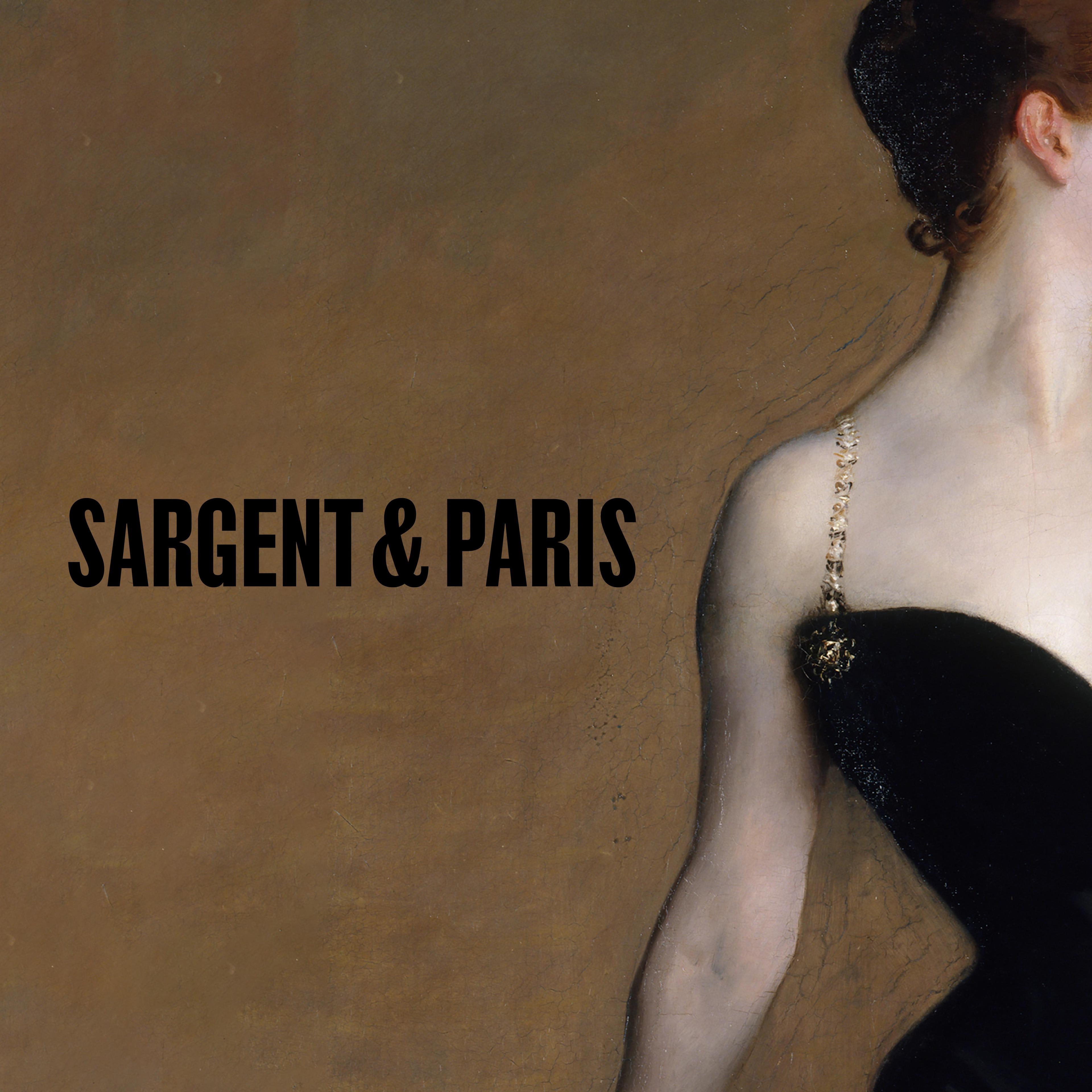Sargent & Paris
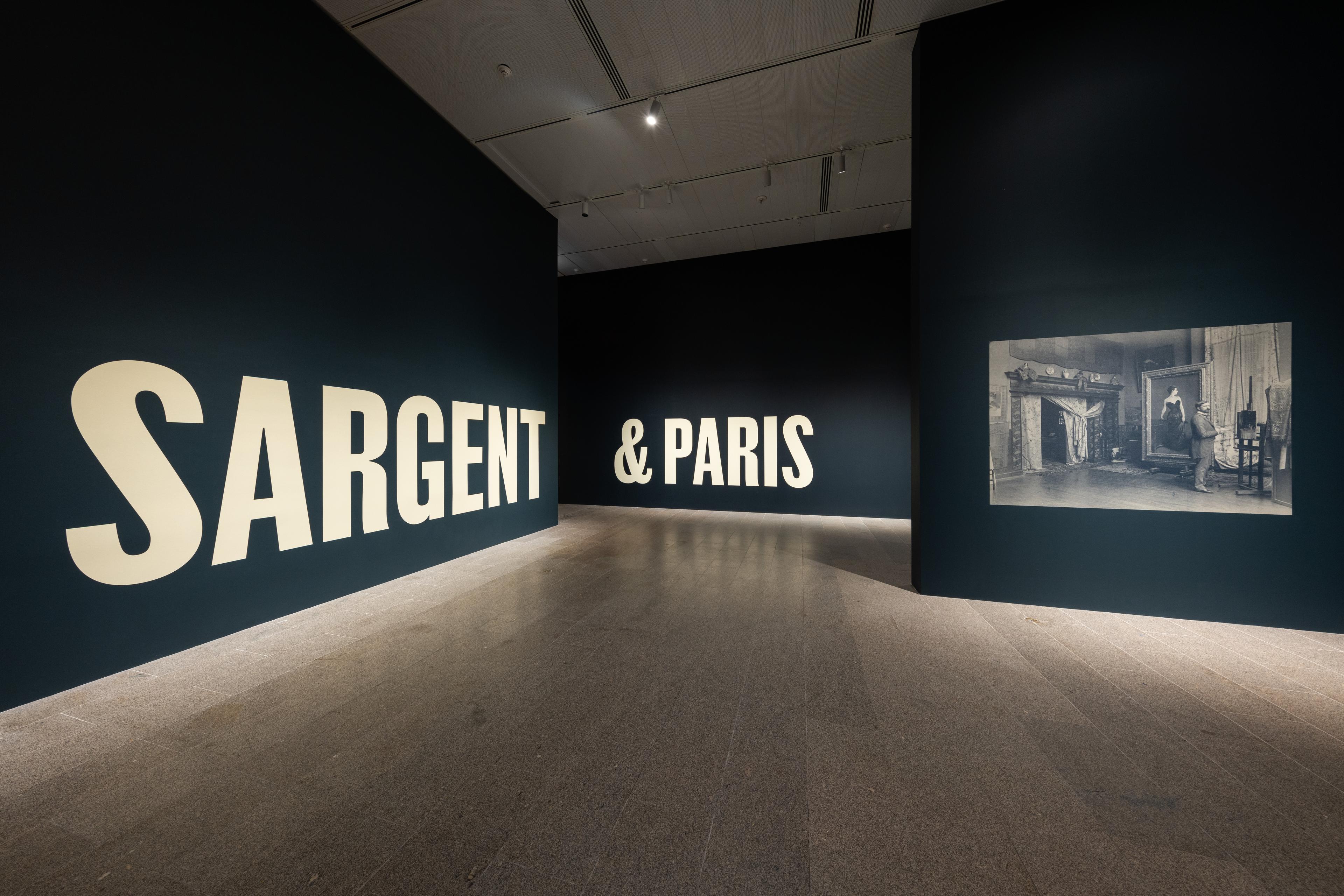
When John Singer Sargent (1856–1925) arrived in Paris in May 1874, the French capital was rapidly transforming into the center of the European art world following the Franco-Prussian War (1870–71) and the foundation of a new government. Determined to become a painter, the precocious eighteen-year-old American art student immersed himself in the city’s vibrant cultural life. He eagerly embraced opportunities for artistic training and studied Paris’s great art, from the magnificent antiquities at the Louvre Museum to the avant-garde paintings of the Impressionists. The multilingual Sargent moved fluidly among a cosmopolitan circle of artists, writers, and patrons who became the subjects of his daring portraits. Traveling in search of inspiration, he also made picturesque compositions across Europe and in North Africa. In Paris and abroad, his work quickly earned him a reputation as a progressive, modern painter.
This exhibition follows Sargent’s meteoric rise in Paris across one remarkable decade, from his arrival through the mid-1880s, when his intentionally provocative Madame X, now an icon of The Met collection, became a scandalous success. Sargent’s canvases from these years illuminate his artistic beginnings and offer a keenly observed view of Parisian society and its art world. Inspiring Sargent’s boldest, most ambitious paintings, this formative period launched him as his era’s “greatest contemporary portrait painter,” as his obituarists wrote exactly one hundred years ago.
All works in the exhibition are by John Singer Sargent unless otherwise noted.
In The Studio
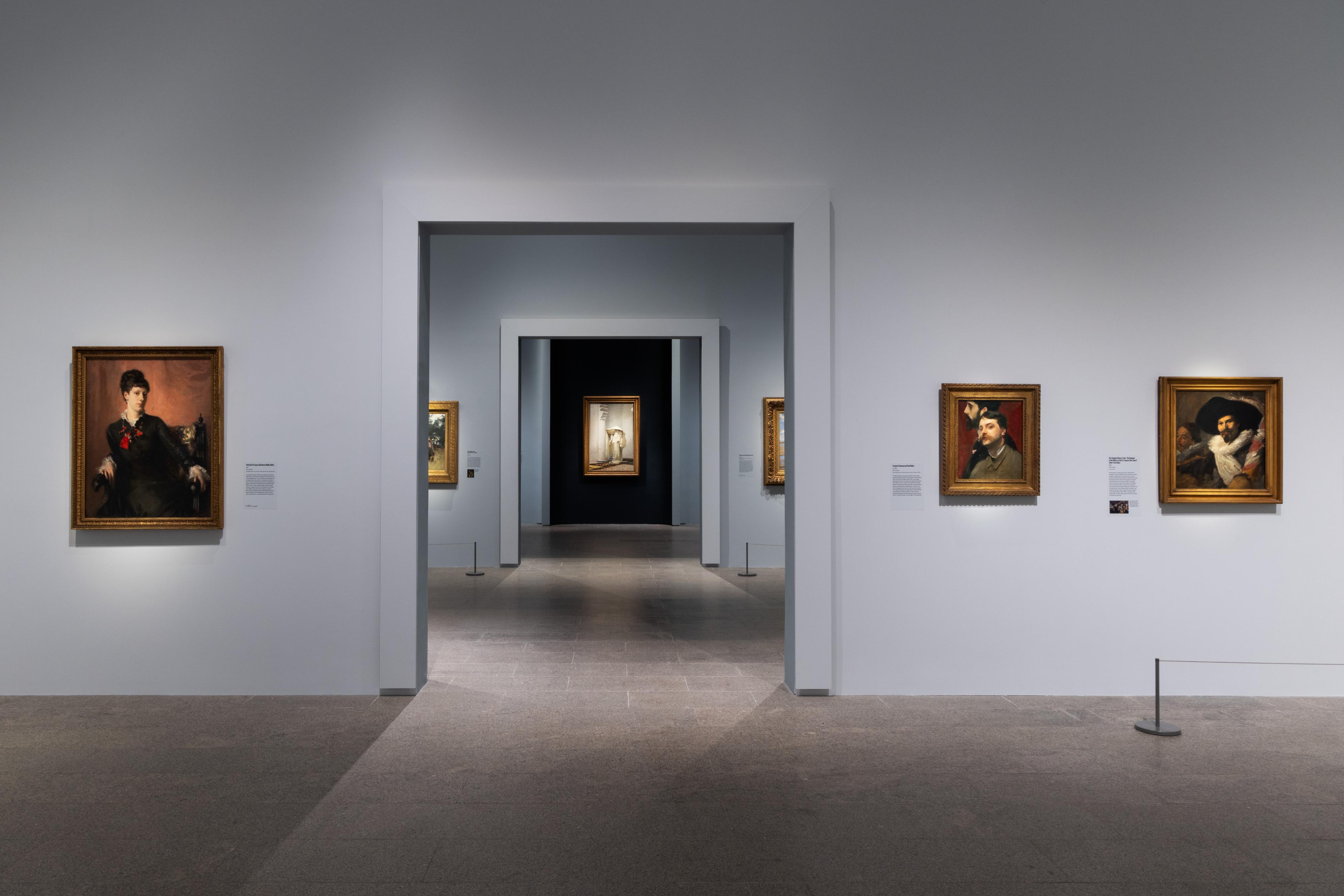
Born in Florence to American parents, Sargent spent his childhood in Europe. His family moved seasonally, seeking affordable lodging and temperate climates. Before he turned eighteen, he had lived in Italy and France, traveled extensively across the European continent, and become fluent in multiple languages. Sargent’s mother, an amateur watercolorist and inveterate sightseer, cultivated her son’s interest in art by encouraging him to sketch daily. After years of serious practice and some lessons, Sargent was well prepared to enroll at the Accademia di Belle Arti in Florence in 1873. He and his parents soon determined, however, that Paris would be “the best place” to nurture his talent.
Arriving in Paris in May 1874, Sargent studied with leading French portraitist Carolus-Duran (1837–1917) and enrolled at the prestigious state-sponsored school, the Ecole des Beaux-Arts, which he attended intermittently through 1877. Sargent adopted the academic tradition, and his broad knowledge of art history was greatly enriched by the historical and contemporary art on view in Paris. His relationships with members of the international community—students, artists, and patrons—were critical to his development. Only three years after his arrival he launched his public career at the Paris Salon, the celebrated annual art exhibition, at which he showed a portrait of his friend Fanny Watts.
Selected Artworks
Press the down key to skip to the last item.
Beyond the Studio
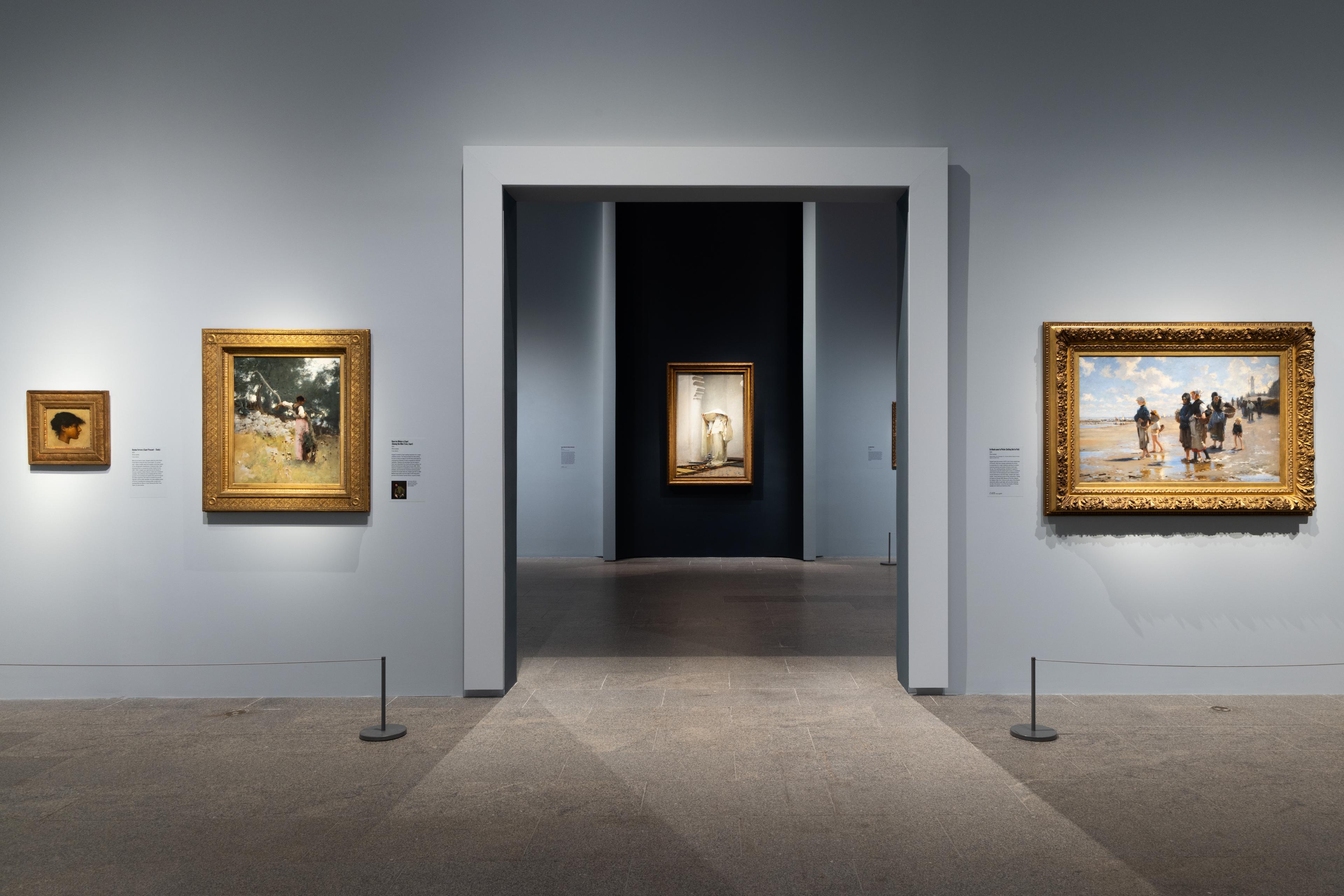
During his student years in Paris, Sargent spent his summers traveling. He found inspiration near the French coast in Normandy and Brittany, and, at twenty years old, crossed the Atlantic for the first time to the United States. Sargent’s interest in painting outdoors was stimulated by contemporary artists, particularly the Impressionists. He attended the independent group’s 1876 exhibition in Paris and became lifelong friends with founding member Claude Monet (1840–1926). Sargent’s expressive technique was suited to experimentation and the immediacy of plein-air painting.
Sargent’s travel sketches inspired major paintings, which he exhibited in Europe and the United States. He often chose subjects popular at the time: local people, architecture, and seascapes. Above all, Sargent sought attention at the Paris Salon, the annual state-sponsored exhibition that offered unparalleled public exposure. Upon the completion of his formal training, he showed two paintings at the Salon in 1878—a landscape painted in Capri and a portrait of his teacher Carolus-Duran, which earned an honorable mention. Critics suggested that the student had surpassed his master.
Selected Artworks
Press the down key to skip to the last item.
The Lure of Travel
Upon completion of his training, Sargent was determined to continue his study of historic art. Having spent a significant part of his youth living in Italy and some time in Spain, he was enchanted by the art and culture of both countries. On several major painting trips, he captured the unique characteristics of each place, though the works are also bound by his quest for subjects that Western audiences considered “exotic”: picturesque sites, vernacular architecture, and local people. Sargent himself was drawn to the special quality of Mediterranean light.
In 1879–80, Sargent made an extended trip through Spain and Morocco. Following an artistic pilgrimage to Madrid to copy the paintings of Diego Velázquez (1599–1660) at the Prado Museum, he traveled south to paint and indulge his passion for the country’s music and dance. Around the new year, he crossed into Morocco before returning to Paris. Sargent had been longing to visit Italy again for several years but was waiting until he felt sufficiently accomplished as an artist. No Italian city captivated him quite like Venice—during lengthy visits in 1880 and 1882, he painted unusual vistas far from touristed areas.
Selected Artworks
Press the down key to skip to the last item.
Fascinating Portraits
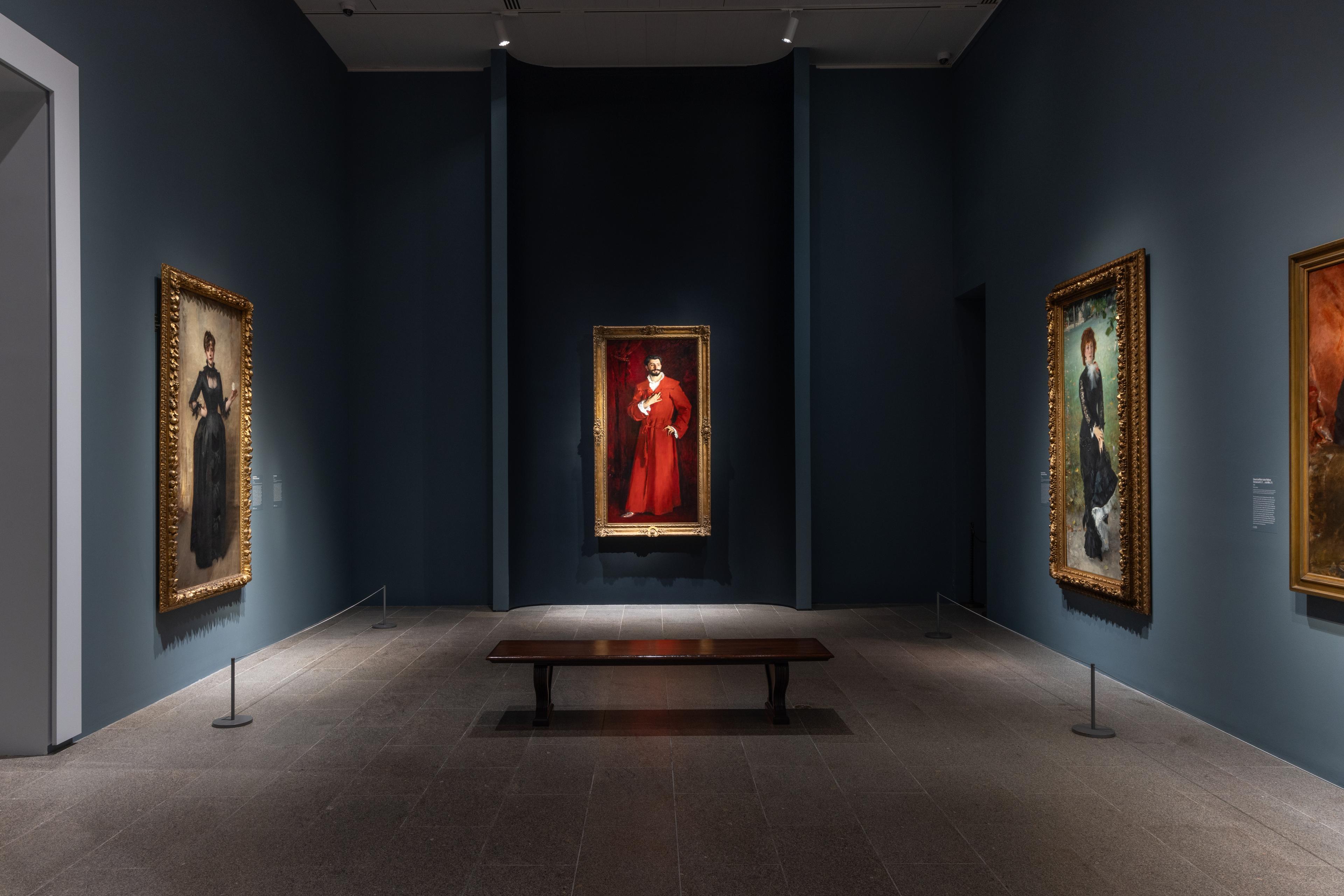
In the early 1880s Sargent balanced his wanderlust with studio work in Paris. Determined to build his public career, he contrived increasingly ambitious paintings for exhibitions in Paris and abroad. He primarily sought approval at the Paris Salon, where audiences numbering in the hundreds of thousands offered considerable exposure. One French writer noted, in 1881, that Sargent’s portraits had “the rare gift of attracting you when you pass by them, of fascinating you and of interesting you.” This was especially crucial at the Salon, where thousands of paintings—hung from floor to ceiling and arranged alphabetically by artist—competed for attention. As Sargent pushed boundaries, his bold works attracted notice from members of the international community, and he began receiving more commissions.
The striking portraits in this gallery and the next were created during a highly productive three-year period, from 1879 to 1882. Sargent’s earliest patrons were friends and acquaintances or members of artistic society. During an era of increasing wealth and social mobility, his sitters embraced self-presentation through portraiture—often to validate their standing. As Sargent achieved success, his rapid rise caused one French critic to complain that Americans “have painters, like Mr. Sargent, who take away our medals, and pretty women who eclipse ours.”
Selected Artworks
Press the down key to skip to the last item.
The Most Talked–About Painter in Paris
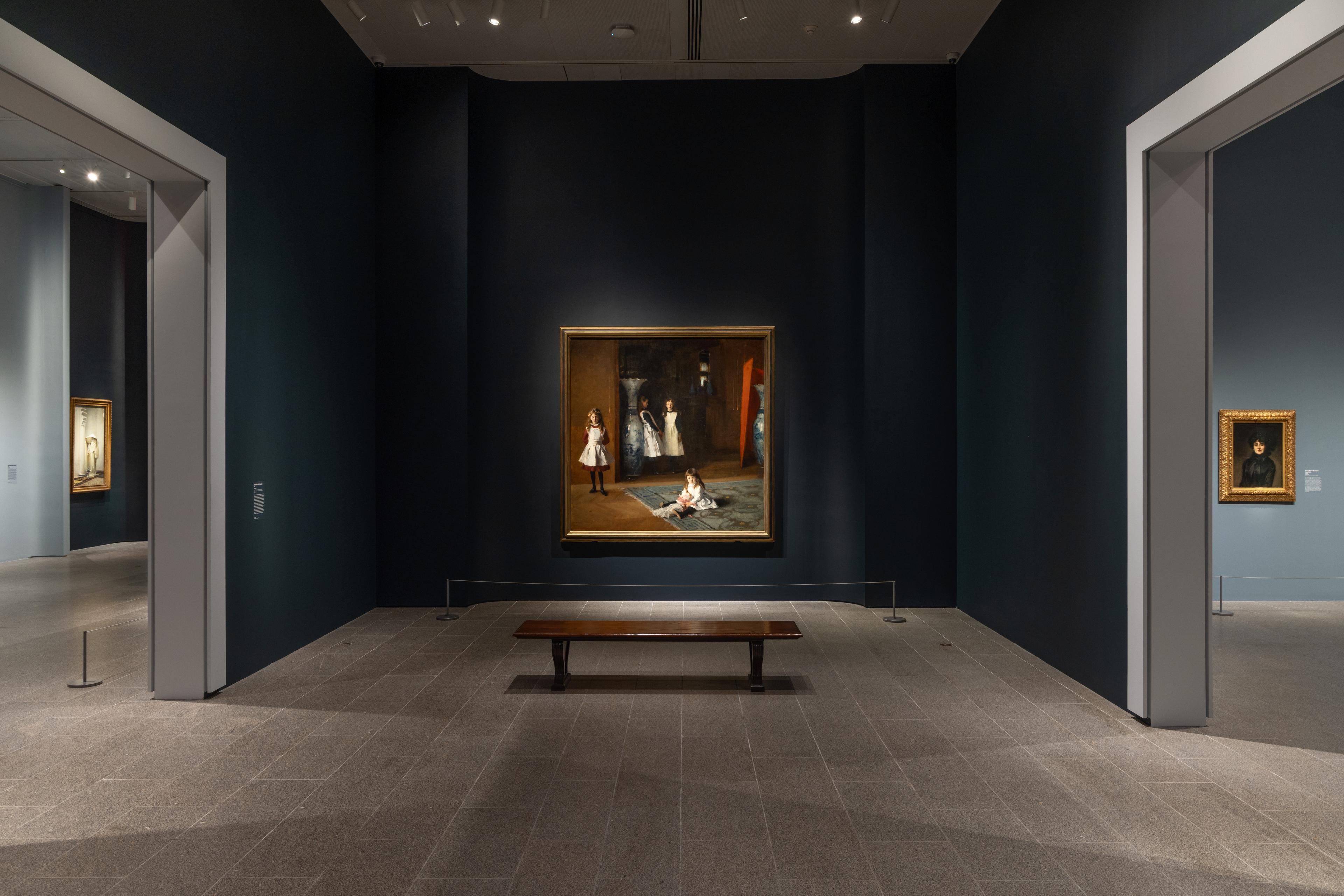
Sargent had tremendous success at the Paris Salon in 1882. Critics celebrated his flattering portrait of Charlotte Burckhardt, while his monumental El Jaleo, a striking image of Spanish flamenco, made him “the most talked-about painter in Paris.” Following this triumph, Sargent faced intense pressure to deliver another extraordinary submission for 1883. He began two portraits of notable society women, but when neither was completed in time, he sent The Daughters of Edward Darley Boit. This remarkable portrait of the children of his friends, fellow American expatriates Edward Darley Boit and Mary Louisa Cushing of Boston, is an emotionally probing rendering of childhood. Set in a carefully constructed space employing dramatic light and shadow, it is grounded in his close study of the art of the past and present, revealing his debt to Spanish painter Diego Velázquez (1599–1660) and interest in the work of avant-garde artists such as Edgar Degas (1834–1917). The result is a compellingly modern portrait.
Selected Artworks
Press the down key to skip to the last item.
Friendship & Patronage
Sargent built a significant network in Paris through talent, intellectual curiosity, and social acumen. He moved fluidly among sophisticated circles of artists, writers, and patrons. He was a charismatic companion, and friends described his congeniality and good humor, qualities that served him well during the hours required for portrait sittings. As novelist Henry James wrote of Sargent, “His character is charmingly naif, but not his talent.”
Sargent was acquainted with many literary figures and art critics. Writers Louis de Fourcaud and Emma Allouard-Jouan, among others, wrote astute critiques of his art for prestigious journals, which bolstered his reputation and led to commissions. Many of the portraits in this gallery bear witness to Sargent’s close relationships with these influential figures. He often created dashing portraits of his friends as tokens of appreciation, using an experimental style suited to their progressive, cultured taste.
During these years, Sargent’s career as a portraitist flourished. He shrewdly catered to an upwardly mobile international clientele, becoming known as a flattering painter of women. The close friendships he formed with the dynamic women of Paris from artistic, literary, or high society were essential to his success and reveal his proximity to the city’s social and cultural epicenter.
Selected Artworks
Press the down key to skip to the last item.
La Parisienne
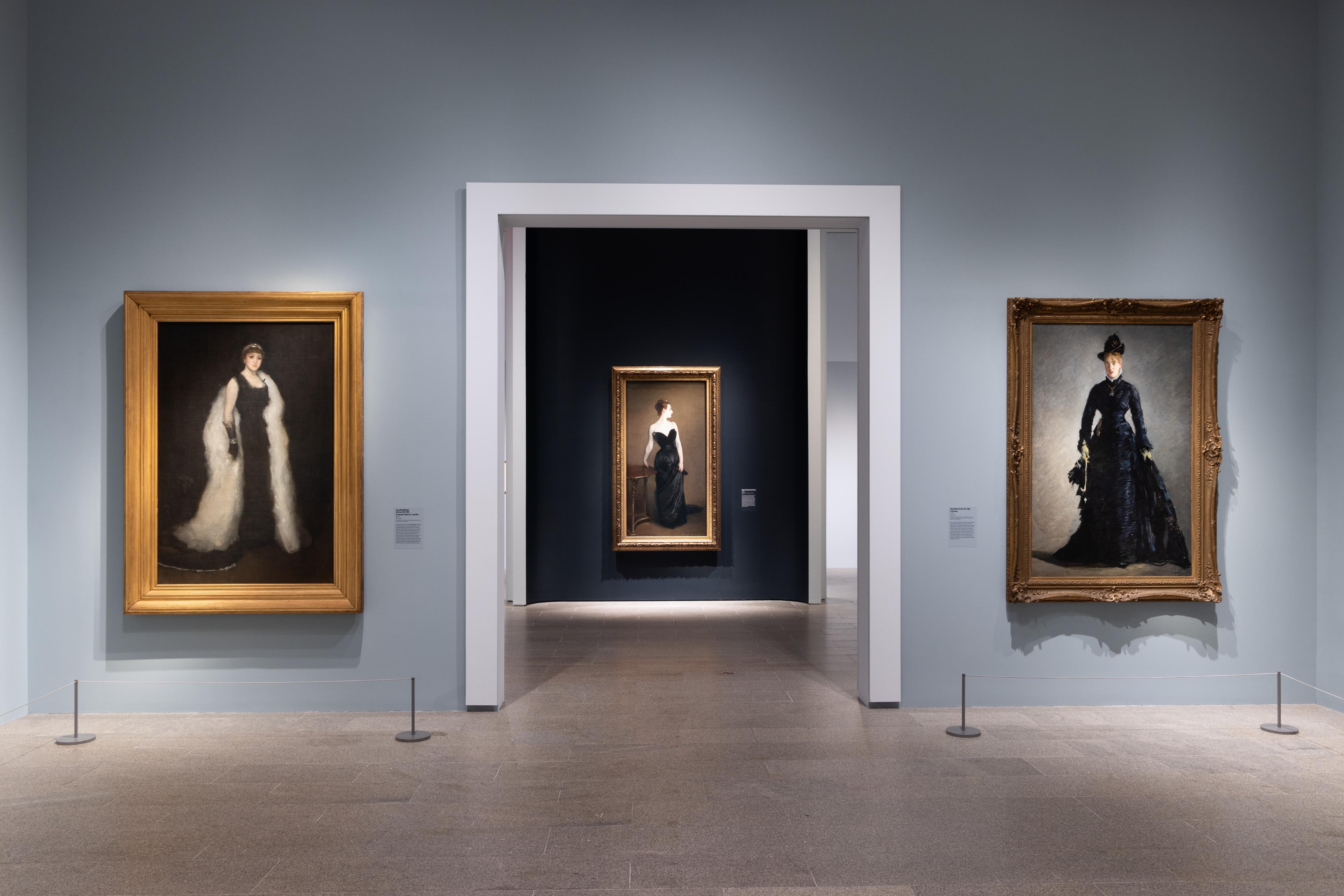
In the second half of the nineteenth century, the fashionable, modern woman of Paris, the so-called Parisienne, became a fascination to French society that quickly spread abroad. The figure encapsulated a particular worldly elegance, unique to denizens of the capital. This mythic ideal, purportedly having “arisen like Venus from the waters of the Seine,” was a source of national pride. Versions of the Parisienne appeared in stage plays, newspaper articles, and satirical cartoons. Artists competed on the walls of public art exhibitions to express the Parisienne’s ineffable chic. Alongside celebrations of Paris as a cosmopolitan center lay anxiety about foreign threats to French cultural superiority, and critics debated: Was it necessary to be French to be a true Parisienne?
The six portraits of Parisiennes in this gallery are by artists whom Sargent would have known and admired in Paris. Traversing the spectrum of contemporary artistic tradition from conservative to progressive, these artists each offer their own interpretation of modern beauty. Sargent would have been acutely aware of this popular subject and looked to examples by other artists in Paris as he sought to satisfy his sitters and distinguish his art from that of his competitors.
Selected Artworks
Press the down key to skip to the last item.
Madame X
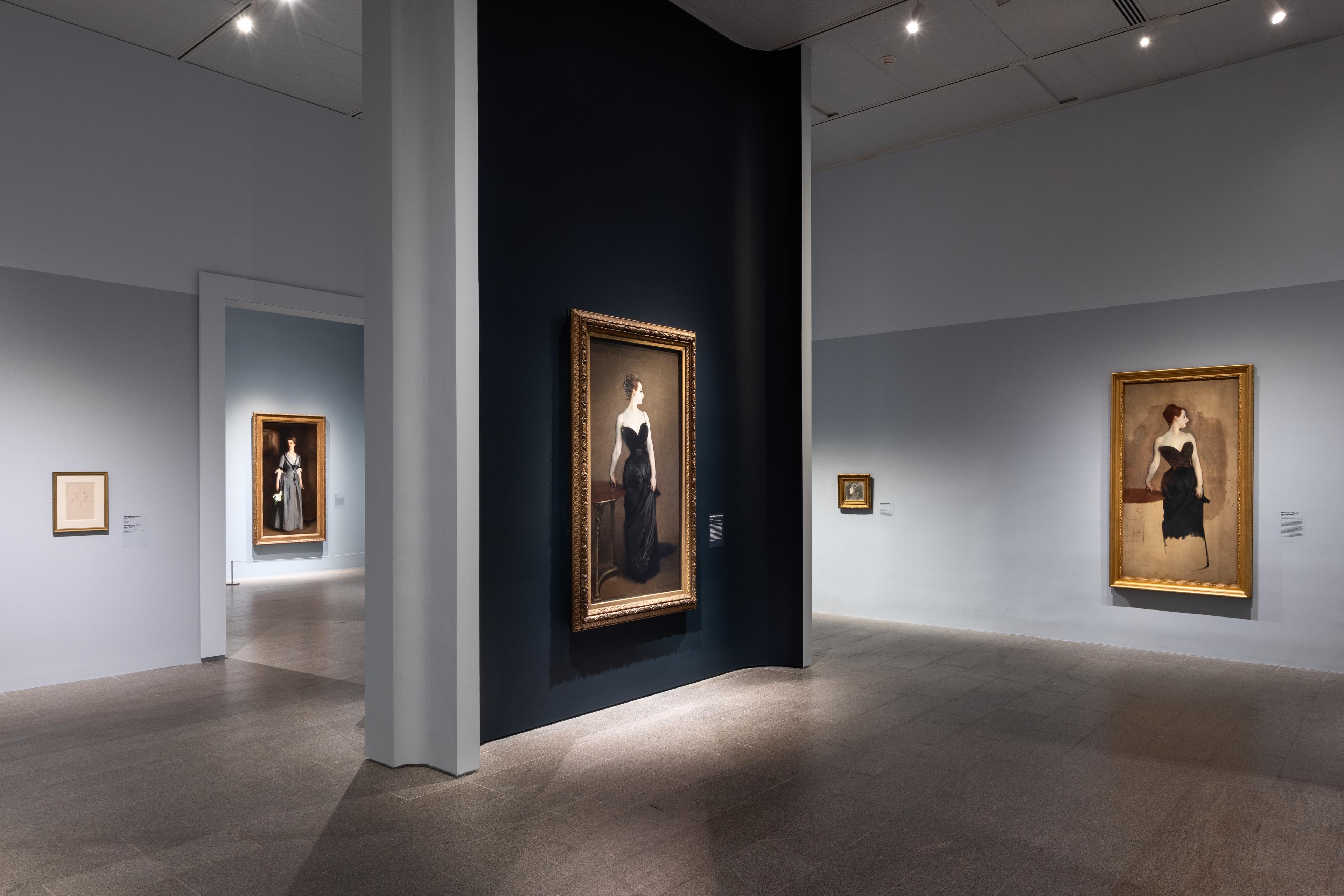
Virginie Amélie Avegno Gautreau (1859–1915) was a glamorous figure in Paris in the early 1880s. Born in New Orleans to parents of French descent, she immigrated to Paris as a child and married a French banker in 1879, rising quickly in society. Fascinated by her arresting appearance and intending to create a magnum opus for the Salon, Sargent convinced her to pose for him without a commission. The portrait, shown as Madame ***, was a calculated collaboration between two outsiders who sought recognition in the French capital. Upon completion, Gautreau described it as a “masterpiece.”
Sargent conceived the portrait as a bold image of a modern, self-styled celebrity, but viewers saw a controversial Parisienne (or worse, an American interloper) who challenged the manners of French society. The work was met with esteem and scorn. Many critics used Gautreau’s appearance to question her morals: They derided her “excessive” use of cosmetics, a symbol of vanity, and her “undress” (Sargent originally painted her dress strap sliding off her right shoulder). Gautreau’s mother begged the artist to remove the portrait from the Salon, but he defended his work. Despite the uproar, within days Gautreau was seen in Paris wearing a low-cut dress with a sparkling shoulder strap. When he sold the work to The Met in 1916, Sargent wrote that it was “the best thing I’ve done,” and asked that it be titled Madame X.
Selected Artworks
Press the down key to skip to the last item.
The Paris Salon of 1884
Madame X was one of 2,488 paintings shown at the Paris Salon in 1884. Sargent’s art already had a reputation for capturing attention, but his likeness of Gautreau, displayed as Madame ***, brought intense scrutiny. In this gallery, images of paintings that were shown the same year give an impression of the crowded Salon walls. Pictures were hung from floor to ceiling with no regard to subject. While most artworks had to pass the jury’s approval, quality varied substantially. Many of the works reproduced here are by obscure artists. Still others remain unlocated today.
Sargent’s portrait of Gautreau was displayed in gallery 31, where it notably stood out: the figure’s unusual, twisted pose and averted gaze flouted societal expectations for the genre. Her seemingly artificial complexion and fallen shoulder strap elicited the greatest response. Even though visitors encountered images of naked figures in the guise of allegory or myth, seeing a Parisienne’s so-called undress shocked viewers and provoked speculation about Gautreau’s morals.
Selected Artworks
Press the down key to skip to the last item.
Uncanny Spectacle
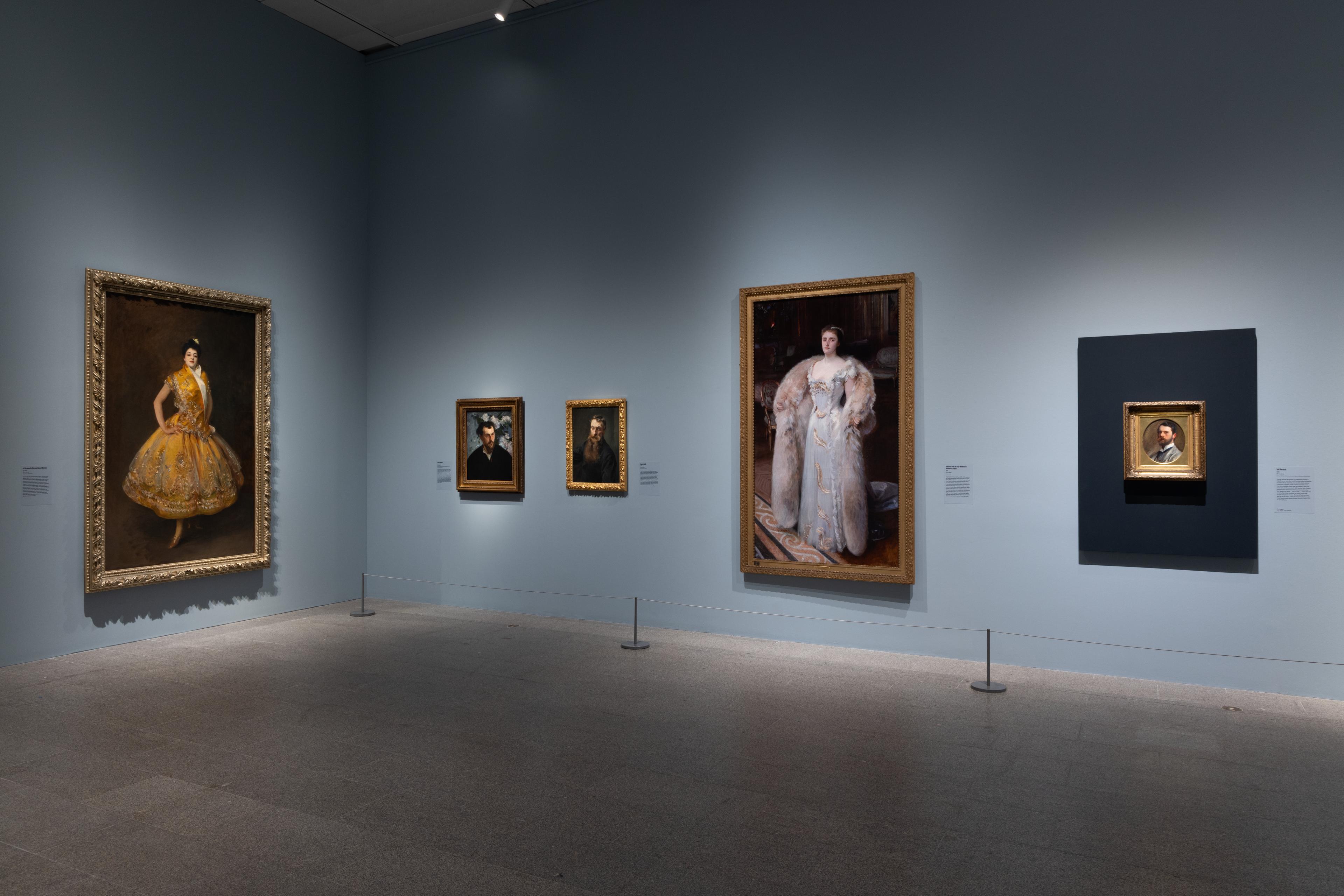
In June 1884 Sargent traveled to England for five months to fulfill several commissions. Following the debacle of Madame X, these British portraits helped redeem his reputation at the Paris Salon in 1885. Encouraged by the public response and by the writer Henry James, twenty-nine-year-old Sargent moved to London, where he resided until his death in 1925. Still, Sargent never fully left Paris behind. He continued to exhibit in the French capital and returned often, telling Monet, “My heart is set on not letting myself be forgotten in Paris.” He carried with him the skills, lessons, and relationships of his decade in the city for the rest of his life.
Assessing Sargent’s Paris oeuvre in 1887, James proclaimed that his work “offers the slightly ‘uncanny’ spectacle of a talent which on the very threshold of its career has nothing more to learn,” and wondered what his future held. The young artist soon became one of the most sought-after portraitists on both sides of the Atlantic. As Sargent accumulated honors and awards, one of the most meaningful may have been the purchase of his portrait, La Carmencita, by the French state in 1892—securing his reputation in the city that formed him.
Selected Artworks
Press the down key to skip to the last item.
